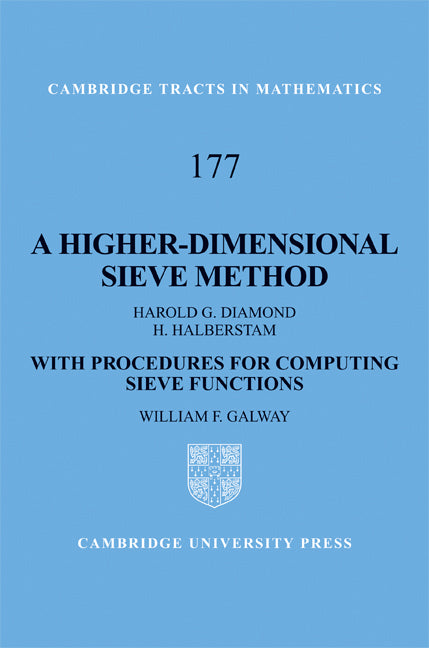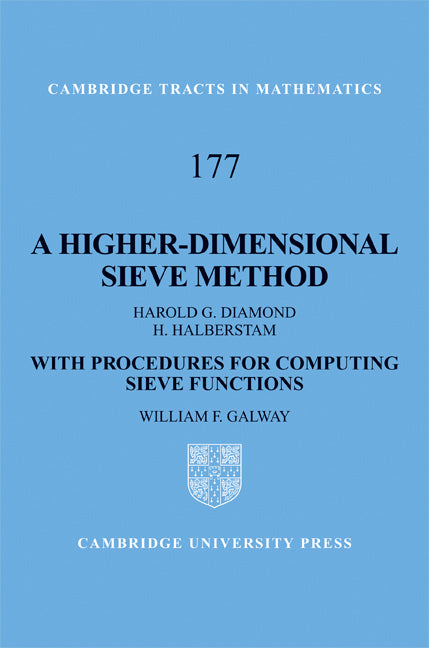Freshly Printed - allow 8 days lead
Couldn't load pickup availability
A Higher-Dimensional Sieve Method
With Procedures for Computing Sieve Functions
Modern and practical guide to higher dimensional sieve theory, with an Appendix describing methods for computing sieve functions.
Harold G. Diamond (Author), H. Halberstam (Author), William F. Galway (Author)
9780521894876, Cambridge University Press
Hardback, published 16 October 2008
290 pages, 5 b/w illus. 15 tables
23.5 x 15.5 x 2 cm, 0.52 kg
'Overall, this monograph is quite technical and is mostly aimed at people with a reasonable background in sieving theory. However, it is an excellent reference for anyone searching for the most up-to-date results in the theory.' Zentralblatt MATH
Nearly a hundred years have passed since Viggo Brun invented his famous sieve, and the use of sieve methods is constantly evolving. As probability and combinatorics have penetrated the fabric of mathematical activity, sieve methods have become more versatile and sophisticated and in recent years have played a part in some of the most spectacular mathematical discoveries. Many arithmetical investigations encounter a combinatorial problem that requires a sieving argument, and this tract offers a modern and reliable guide in such situations. The theory of higher dimensional sieves is thoroughly explored, and examples are provided throughout. A Mathematica® software package for sieve-theoretical calculations is provided on the authors' website. To further benefit readers, the Appendix describes methods for computing sieve functions. These methods are generally applicable to the computation of other functions used in analytic number theory. The appendix also illustrates features of Mathematica® which aid in the computation of such functions.
List of tables
List of illustrations
Preface
Notation
Part I. Sieves: 1. Introduction
2. Selberg's sieve method
3. Combinatorial foundations
4. The fundamental Lemma
5. Selberg's sieve method (continued)
6. Combinatorial foundations (continued)
7. The case ? = 1: the linear sieve
8. An application of the linear sieve
9. A sieve method for ? > 1
10. Some applications of Theorem 9.1
11. A weighted sieve method
Part II. Proof of the Main Analytic Theorem: 12. Dramatis personae and preliminaries
13. Strategy and a necessary condition
14. Estimates of ?? (u) = j? (u/2)
15. The p? and q? functions
16. The zeros of ??2 and ?
17. The parameters ?? and ??
18. Properties of F? and f?
Appendix 1. Methods for computing sieve functions
Bibliography
Index.
Subject Areas: Number theory [PBH]


